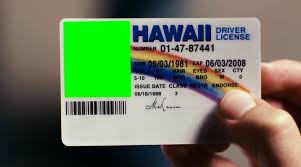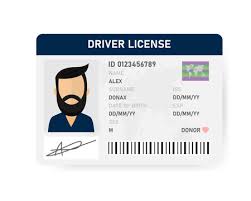photo ID software
Introduction: The Importance of Identity Verification in Today’s Digital World
(Approx. 1000 words)
The 21st century has witnessed an unprecedented rise in digital transformation across all sectors. From financial services to healthcare, e-commerce, and education, almost every industry now requires secure and reliable identification processes to verify individuals, protect personal data, and prevent fraudulent activities. One of the most efficient and modern methods for achieving this is Photo ID Software.
As organizations move away from traditional methods of identity verification, they increasingly adopt digital tools that offer speed, accuracy, and enhanced security. Photo ID software offers a seamless, automated way to capture, create, and authenticate photo identification, serving industries that prioritize trust and safety.
In this article, we will delve deep into Photo ID Software—its features, benefits, market potential, and key considerations for choosing the best solution for your business needs.
1. What is Photo ID Software?
(Approx. 1000 words)
Photo ID software is a specialized tool designed to facilitate the creation, management, and authentication of photo identification documents. It plays a crucial role in both physical and digital forms of identity verification, providing businesses, institutions, and governments with the technology to produce secure ID cards and manage identity databases.
Key Functions of Photo ID Software:
- Photo Capture and Editing: Capture high-quality photos of individuals for IDs.
- ID Card Design: Design customizable ID cards with various templates, logos, and security elements.
- Data Management: Store, edit, and manage personal and identification data securely.
- Security Features: Embed encrypted QR codes, barcodes, holographic overlays, and other security elements.
- Integration with Biometrics: Integrate facial recognition, fingerprint scanning, or retina scans to enhance security.
- Automation: Automated ID creation for large-scale organizations (universities, corporations, etc.).
- Cloud and On-Premises Options: Allow businesses to choose between cloud-based services or locally installed software.
Benefits of Using Photo ID Software:
- Enhanced Security: Protect sensitive data and ensure the authenticity of users.
- Time Efficiency: Automate the ID creation process, reducing manual errors and speeding up the workflow.
- Cost-Effectiveness: Reduce the costs associated with third-party ID providers by producing IDs in-house.
- Compliance: Stay compliant with legal and regulatory standards, such as GDPR, by ensuring secure management of personal data.
- Customization: Design cards tailored to specific needs, including different formats, sizes, and security features.
2. Key Features of Photo ID Software
(Approx. 1500 words)
Modern Photo ID Software comes with a wide array of features that cater to different industries and business needs. Here’s a detailed look at some of the essential features:
a) User-Friendly Interface
A well-designed user interface is crucial for any software, especially one that needs to be used by non-technical staff. The software should be intuitive, with drag-and-drop functionality, easy-to-understand icons, and guided templates that make the process of ID creation effortless.
b) Customizable Templates
A good photo ID software solution comes equipped with pre-designed templates that businesses can customize according to their branding needs. These templates should include options to add logos, employee numbers, designations, and other essential information.
c) High-Resolution Photo Capture and Editing Tools
Photo quality is critical for any ID. The software must be able to capture high-resolution images using built-in or connected cameras. Moreover, editing tools (such as cropping, adjusting brightness, and contrast) ensure that the final photo meets the required standards.
d) Biometric Integration
As more organizations require advanced security protocols, biometric integration has become an indispensable feature. Facial recognition, retina scanning, and fingerprint detection are increasingly used to authenticate identities in real-time. This feature enhances security for high-risk environments such as airports, government buildings, and financial institutions.
e) Security Features (QR Codes, Barcodes, Holograms)
To prevent counterfeiting and identity fraud, photo ID software should offer various security elements such as encrypted QR codes, barcodes, magnetic strips, and holographic overlays. These features make it more difficult for unauthorized personnel to replicate IDs.
f) Database Management
Storing and managing large volumes of data securely is another critical function. The software should have a robust database management system that allows administrators to store personal information, photos, and ID card designs securely. Options for easy retrieval, updating, and deletion of records are essential.
g) Print and Export Options
Once the ID card design is finalized, the software should allow users to print cards in high resolution or export them in multiple formats (e.g., PDF, PNG) for external use or digital archiving.
h) Integration with Access Control Systems
Many organizations use photo ID cards not only for identification purposes but also for access control. Integration with access control systems (e.g., RFID readers) enables seamless movement within secure facilities, ensuring that only authorized personnel can enter restricted areas.
3. Market Analysis: The Growing Demand for Photo ID Software
(Approx. 1000 words)
a) Global Market Overview
The global photo ID software market is expanding rapidly, driven by the increasing need for secure identification methods in sectors like education, healthcare, government, and corporate enterprises. With the rise of data breaches and identity fraud, businesses and institutions are prioritizing the adoption of robust security measures.
b) Key Market Drivers
- Increased Need for Security: In an era where identity theft and data breaches are becoming more common, organizations are turning to advanced photo ID software to ensure the secure handling of personal data.
- Digital Transformation: As companies move to digital-first operations, integrating tools like photo ID software becomes crucial for streamlined and secure processes.
- Government Regulations: Compliance with international and national security regulations (such as GDPR in Europe) has forced businesses to adopt more secure identity management systems.
- Adoption of Cloud-Based Solutions: Cloud-based photo ID software is gaining traction due to its scalability, remote accessibility, and easy integration with existing IT infrastructure.
c) Market Segmentation by Industry
- Education: Universities and schools use photo ID software for student ID cards, ensuring both security and personalization.
- Healthcare: Hospitals and healthcare institutions need secure ID cards for patients, staff, and visitors, often integrated with medical records.
- Government: National ID programs, driver’s licenses, and passport systems require advanced photo ID solutions for high-volume, high-security needs.
- Corporate Enterprises: Large companies use photo ID cards for employee identification and access control within offices and secure facilities.
4. Target Audience: Who Can Benefit from Photo ID Software?
(Approx. 1200 words)
The audience for photo ID software is broad, as the need for secure identification solutions spans multiple industries. Here are some key sectors and organizations that would benefit from this technology:
a) Educational Institutions
Schools, colleges, and universities need to issue ID cards to students, faculty, and staff. These cards not only serve as identification but also allow access to facilities such as libraries, laboratories, and dormitories. Photo ID software helps institutions produce cards efficiently, reducing the cost of outsourcing.
b) Healthcare Providers
Hospitals and clinics must ensure that only authorized personnel and patients have access to certain areas and services. Secure ID cards help prevent unauthorized entry and provide an easy way to identify patients, reducing the risk of medical errors.
c) Government Agencies
Governments require photo ID systems for issuing national IDs, passports, driver’s licenses, and other important documents. High-level security features are essential to prevent fraud, counterfeiting, and unauthorized access to sensitive information.
d) Corporations and Businesses
Large corporations with multiple locations often require a secure way to track employee access and attendance. Integrating photo ID systems with employee databases, payroll systems, and access control ensures smooth operations and enhances security within the company.
e) Event Management Companies
For large-scale events such as conferences, concerts, and sports events, photo ID software helps create customized badges for attendees, speakers, and staff. These badges can also serve as access passes for different sections of the event.
f) Financial Institutions
Banks and other financial institutions use photo ID software to produce secure identification cards for both customers and employees. This reduces the risk of identity theft and ensures that sensitive information remains protected.
5. How to Choose the Right Photo ID Software for Your Business
(Approx. 1500 words)
Selecting the right photo ID software for your organization involves several important considerations. Here are the key factors to evaluate:
a) Ease of Use
For many businesses, photo ID software will be used by non-technical staff. Therefore, it’s crucial that the software offers an intuitive interface that simplifies the design and production process.
b) Customization and Flexibility
The ability to customize ID cards is a key feature for most organizations. Whether it’s adding logos, choosing specific fonts, or incorporating security features, the software should allow for a high degree of personalization.
c) Scalability
As your business grows, the software should be able to scale along with it. Whether you need to produce a handful of ID cards or thousands per year, the software should be equipped to handle large-scale production without compromising on quality.
d) Security Features
Depending on the level of security required, look for features such as biometric integration, encryption of personal data, and the ability to add security elements like QR codes, barcodes, and holograms.
e) Integration with Existing Systems
The software should integrate seamlessly with your current IT infrastructure, including databases, access control systems, and HR software. This ensures that the photo ID system is an extension of your existing operations rather than a standalone tool.
f) Customer Support and Training
Good customer support is essential, especially during the initial setup phase. Check if the software provider offers training sessions, detailed documentation, and ongoing technical support.
g) Price and Licensing Model
Photo ID software varies in price depending on its features and capabilities. Consider whether the software is sold as a one-time purchase or on a subscription basis. Additionally, evaluate if there are any hidden costs, such as fees for updates or additional features.
6. Case Studies: Real-World Examples of Photo ID Software in Action
(Approx. 1000 words)
In this section, highlight a few case studies that demonstrate how different industries have successfully implemented photo ID software solutions. These case studies provide tangible proof of the benefits and flexibility that this technology offers. Some examples could include:
a) A University Implementing Secure Student IDs
A large university with over 30,000 students faced challenges in efficiently managing student identification. By adopting a cloud-based photo ID software solution, they were able to automate ID card creation and integrate the system with their student database and access control mechanisms.
b) A Hospital Enhancing Patient Security with ID Software
A regional hospital used photo ID software to issue secure patient identification cards that were integrated with their medical records system. This helped reduce errors in patient treatment and enhanced overall security.
c) A Corporate Office Streamlining Employee Access
A multinational corporation implemented photo ID software to produce employee ID cards, which also doubled as access cards for entering secure areas. The software was integrated with their existing HR and payroll systems, streamlining both security and administrative processes.
7. Conclusion: The Future of Photo ID Software
(Approx. 800 words)
As digital transformation continues to reshape the business landscape, the importance of secure identity verification tools like photo ID software will only grow. The increasing threats of identity fraud, cyberattacks, and data breaches are prompting organizations across industries to adopt more sophisticated security measures.
The future of photo ID software will likely see further integration with biometric technologies, artificial intelligence, and cloud-based solutions, allowing for even faster and more secure identity verification processes.
For businesses and institutions seeking to stay ahead in an increasingly digital and security-conscious world, adopting advanced photo ID software is not just a necessity—it's a competitive advantage.
 Authentic-looking ID
Authentic-looking ID
 High-Quality Fake ID
High-Quality Fake ID
 digital fake ID
digital fake ID
 Student identification solutio
Student identification solutio